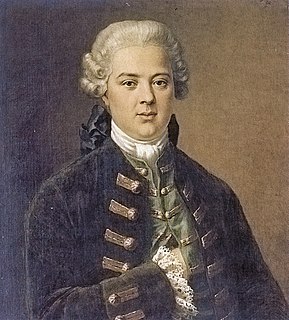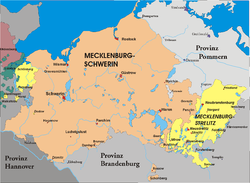Herzogtum Lauenburg is the southernmost Kreis, or district, officially called Kreis Herzogtum Lauenburg, of Schleswig-Holstein, Germany. It is bordered by the district of Stormarn, the city of Lübeck, the state of Mecklenburg-Vorpommern, the state of Lower Saxony, and the city state of Hamburg. The district of Herzogtum Lauenburg is named after the former Duchy of Saxe-Lauenburg.

The Duchy of Saxe-Lauenburg, was a reichsfrei duchy that existed 1296–1803 and 1814–1876 in the extreme southeast region of what is now Schleswig-Holstein. Its territorial center was in the modern district of Herzogtum Lauenburg and originally its eponymous capital was Lauenburg upon Elbe, though in 1619 the capital moved to Ratzeburg.

The (second) Battle of Bornhöved took place on 22 July 1227 near Bornhöved in Holstein. Count Adolf IV of Schauenburg and Holstein — leading an army consisting of troops from the cities of Lübeck and Hamburg, about 1000 Dithmarsians and combined troops of Holstein next to various Northern German nobles — defeated King Valdemar II of Denmark and the Welf Otto the Child.

Thomas Aderpul was a preacher of the Protestant Reformation who taught an extreme form of egalitarian religious polity; consequently, the German Democratic Republic admired him as a proto-communist.

Georg von Blumenthal was a German Prince-Bishop of Ratzeburg and Bishop of Lebus. He also served as a Privy Councillor of the Margraviate of Brandenburg and Chancellor of the University of Frankfurt (Oder), commonly called the Viadrina.

The Hanseaten is a collective term for the hierarchy group consisting of elite individuals and families of prestigious rank who constituted the ruling class of the free imperial city of Hamburg, conjointly with the equal First Families of the free imperial cities Bremen and Lübeck. The members of these First Families were the persons in possession of hereditary grand burghership of these cities, including the mayors, the senators, joint diplomats and the senior pastors. Hanseaten refers specifically to the ruling families of Hamburg, Lübeck and Bremen, but more broadly, this group is also referred to as patricians along with similar social groups elsewhere in continental Europe.
Eric IV of Saxe-Lauenburg was a son of Eric II, Duke of Saxe-Lauenburg and Agnes of Holstein.

Francis II of Saxe-Lauenburg, was the third son of Francis I of Saxe-Lauenburg and Sybille of Saxe-Freiberg, daughter of Duke Henry IV the Pious of Saxony. From 1581 on he ruled Saxe-Lauenburg as duke.

The Brunswick Lion is a medieval sculpture, created in bronze between 1164 and 1176, and the best-known landmark in the German city of Brunswick. The Brunswick Lion was originally located on the Burgplatz square in front of the Brunswick Cathedral. The monument was moved to Dankwarderode Castle in 1980, and later replaced at the original location by a replica. Within Brunswick, it is commonly known as the "Castle Lion" (Burglöwe).

Anna of Brandenburg was a Duchess consort of Mecklenburg.

The Region of Stralsund belonged to the Prussian Province of Pomerania and existed from 1818 to 1932.
Christoph von der Schulenburg was a German nobleman. As bishop of Ratzeburg he converted to Protestantism.
Ollndorf is a small village in Germany and belongs to the municipality Niendorf and is located on west of the Landkreis Nordwestmecklenburg which is in the federal state of Mecklenburg-Vorpommern.
Gottlieb Matthias Carl Masch was a German theologian, rector, pastor, historian, numismatist and writer on heraldry.
Johann Gottlieb Lindner was a German pedagogue, historian and author. In 1894 he became the director of the Lyceum of Arnstadt and Schwarzburg.

Otto Kade was a German musicologist, organist, conductor and composer.
Rudolf Bülck was a German librarian.
Friedrich Wigger was a north German archivist. During the second half of the nineteenth century he served as archivist in charge of the "Großherzogliche Geheime und Hauptarchiv Schwerin in Mecklenburg", the precursor to the Central State Archive of Mecklenburg-Vorpommern. Wigger was also a local historian and genealogist, noted in particular for his "Stammtafeln des Großherzoglichen Hauses von Meklenburg".
Johann Josef Scotti was a Prussian civil servant, publisher and writer.
This page is based on this
Wikipedia article Text is available under the
CC BY-SA 4.0 license; additional terms may apply.
Images, videos and audio are available under their respective licenses.











